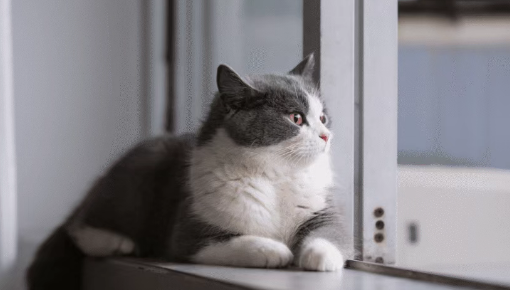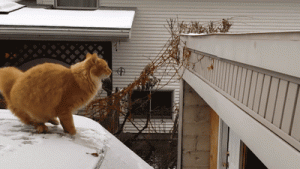Most pet cats today live entirely indoors. Their activity space is essentially limited to the size of the home… Every move they make, every little adventure, happens inside these walls. Apart from necessary trips—like visits to the vet or moving house—they almost never see the outside world. But is it really okay to keep a cat confined indoors for its entire life? Do cats ever feel the urge to explore the world beyond the windows?
-
Do cats need exposure to the outside world?
For cats, interacting with the outside world has both pros and cons.Benefits:① Increased activity: Outdoor spaces give cats more room to explore. During exploration, they run, climb, and jump—helping them get more physical exercise.② Expression of natural instincts: Outdoors, cats can experience new sights, smells, and textures, satisfying their curiosity. When spotting prey, they can instantly switch to hunting mode, fulfilling their predatory instincts. Scratching tree trunks or other surfaces also meets their need to mark territory and maintain their natural scratching behavior.Risks:The outdoors carries many potential dangers that may threaten a cat’s health or life:① Traffic accidents② Ingesting toxic substances③ Fights with stray animals④ Exposure to viruses⑤ Getting lost⑥ Risk of parasites increases twelvefoldIn modern urban settings, the risks often outweigh the benefits. Therefore, free-roaming or semi-roaming is generally not recommended for city cats.
-
Why do cats seem to want to go outside?
① Not always a true desire to leave: Some cats appear eager to go out, but may not actually be “brave enough.” They might sit on a windowsill, staring longingly outside, yet when taken outdoors, they shiver and try to return home. For cats, a window can act like a TV—they can see birds, hear chirping, and smell fresh air without the risks of venturing outside.
② Mating instincts: Cats in heat may feel a stronger urge to go outside, driven by instinct.
③ Curiosity: Some kittens have intense curiosity and see doors as new territories within their home, prompting them to explore.
④ Hunting instinct: Seeing birds, mice, or squirrels can trigger a cat’s DNA-driven hunting instincts, making them want to chase prey outdoors.Note: Meeting a cat’s reasonable needs doesn’t only require letting them out. Proper indoor enrichment can satisfy their instincts and keep them happy—and safe.

-
How to create an indoor environment that meets a cat’s needs
According to the Feline Environmental Needs Guidelines, five aspects must be met:① Safety② Independent key resources (food, water, scratching areas, litter boxes, play areas, rest/sleeping spots)③ Opportunities for play and predatory behaviors④ Positive, consistent human-cat interactions⑤ Respect for a cat’s sense of smell.Practical indoor tips:
⑴ Provide a “private cat space”
Designate an area where humans cannot disturb the cat, giving them a sense of safety. This can be a cardboard box, cat tree, or enclosed cat bed. Place it slightly higher up to reduce distractions.
⑵ Arrange key resources strategically
Separate each resource (food, water, litter box, play area, rest space). This encourages natural exploration and activity while providing easy access to essential needs.
⑶ Support natural behaviors
Cats naturally climb, scratch, hunt, and run. Arrange furniture at different heights to allow climbing and movement. Include scratching posts to fulfill territorial and claw-maintenance needs. Leave toys available when you are away to keep them mentally and physically stimulated.
⑷ Respect a cat’s sense of smell
Cats rely heavily on scent to understand their environment. Avoid disrupting their olfactory cues. Rotate toys for new scents, but don’t change too many familiar items at once, as familiar smells provide security. When bringing in new large items, rub them with a towel that carries the cat’s scent to make them more comfortable.
So as long as you provide proper indoor enrichment, a cat can live its entire life indoors and still be happy, healthy, and fulfilled~





